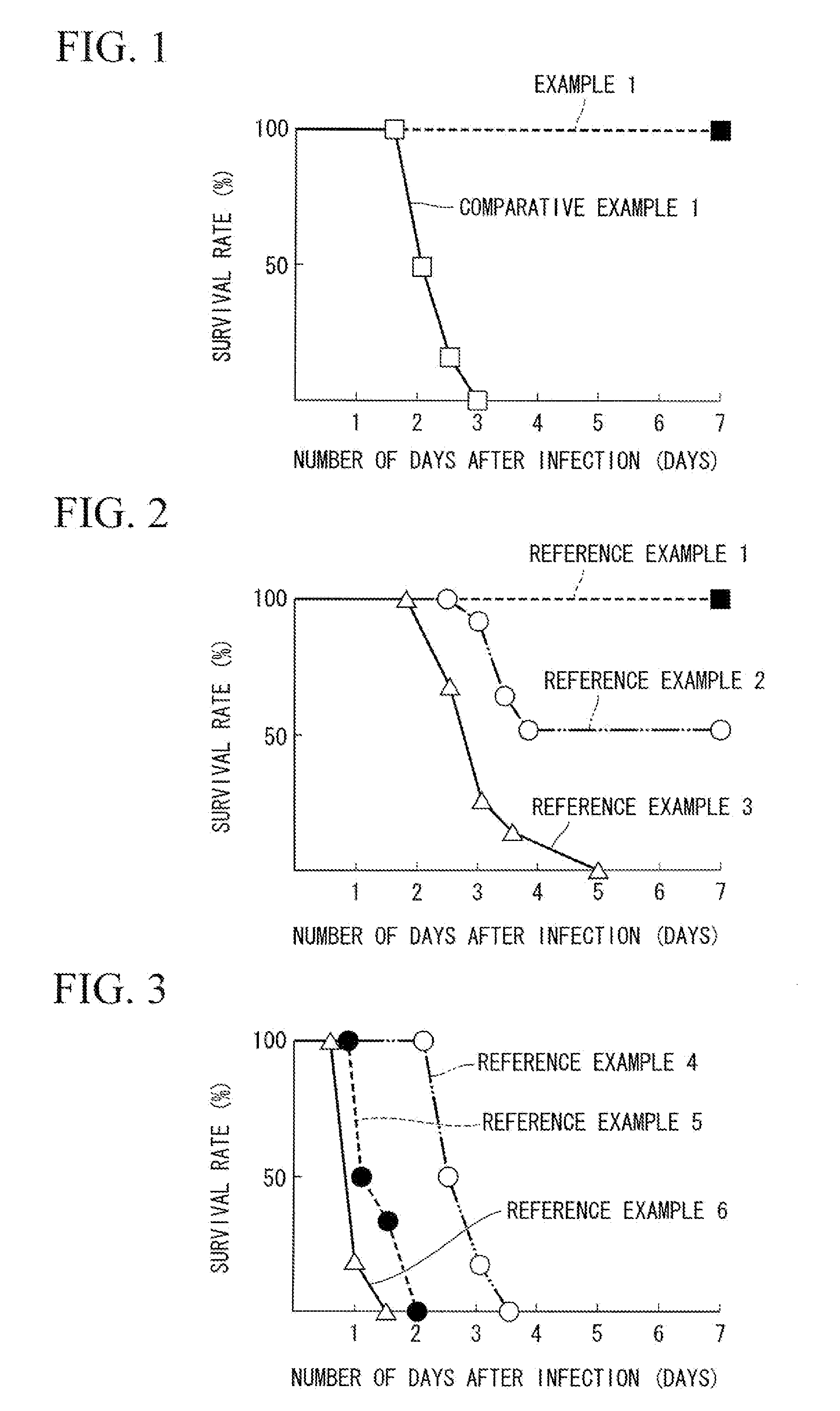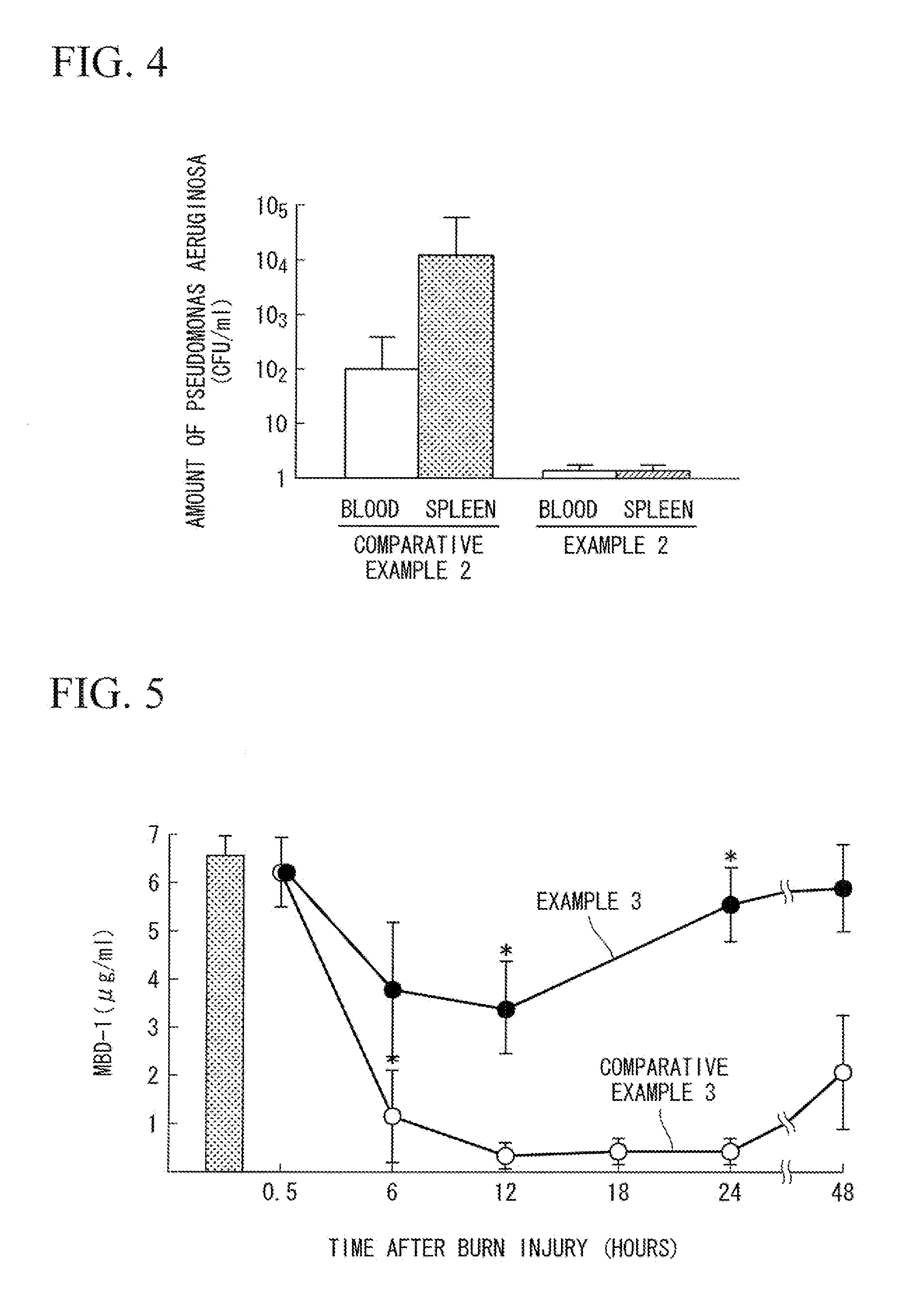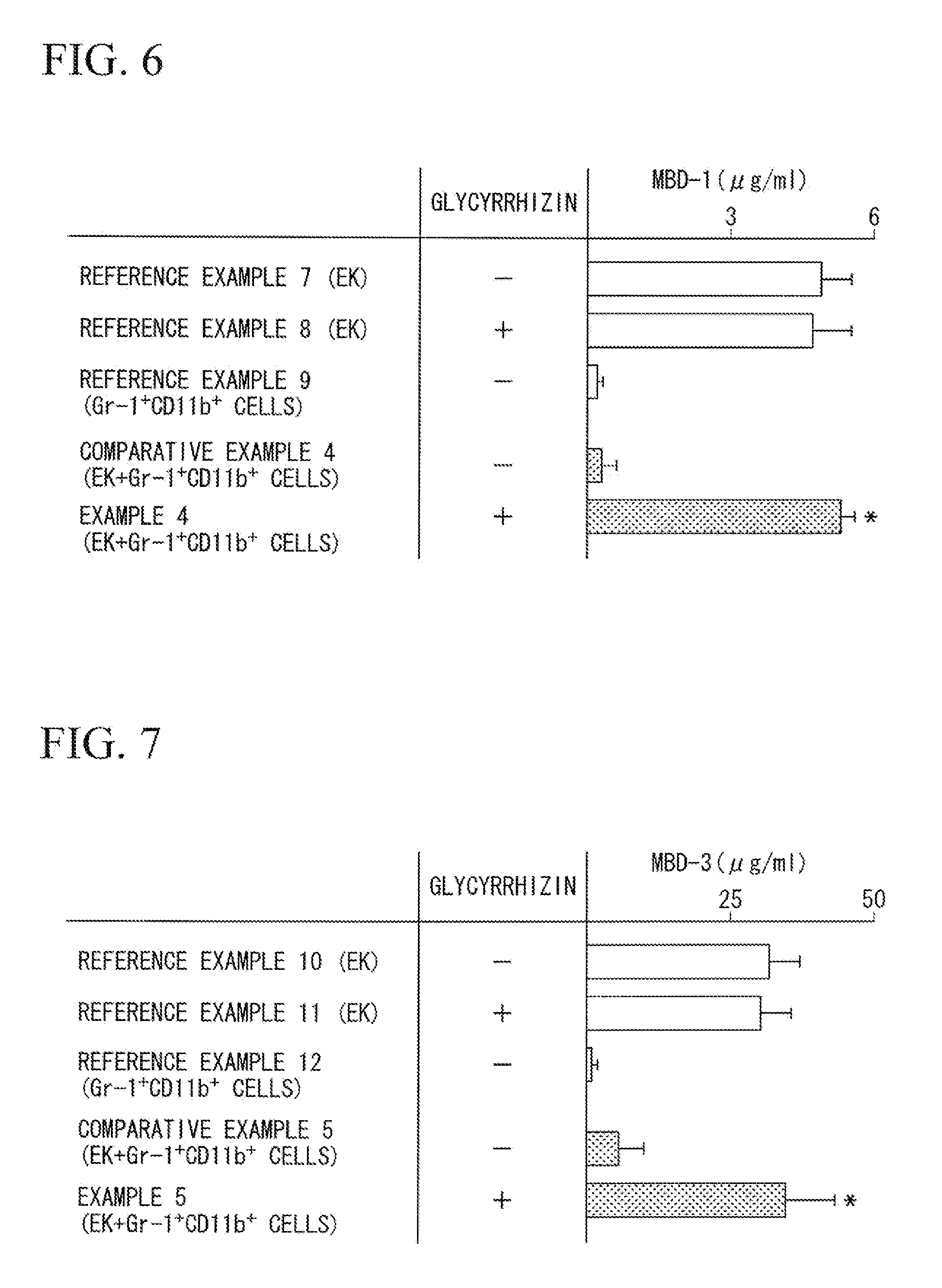Restorative agent for antibacterial peptide production ability
a technology of antibacterial peptides and recovery agents, which is applied in the direction of antibacterial agents, drug compositions, biocide, etc., can solve the problems of aeruginosa, recent growth of serious medical problems, and limited selection of effective therapeutic methods for various infections, and achieves high safety, long record of use, and high safety
- Summary
- Abstract
- Description
- Claims
- Application Information
AI Technical Summary
Benefits of technology
Problems solved by technology
Method used
Image
Examples
example 1
A normal mouse was given a burn injury on the dorsal side, and Pseudomonas aeruginosa was applied to the burn site in an amount of 100 CFU (Colony-Forming Units). Subsequently, glycyrrhizin was intraperitoneally administered to the mouse at 2 hours, 24 hours and 72 hours after the occurrence of burn injury, each time in an amount of 10 mg per kilogram of body weight of the mouse (an amount of 10 mg / kg), and it was checked whether the mouse was alive or dead. The same operation was carried out on 10 mice, and the survival rate of the mice was checked. The results are shown in FIG. 1. The horizontal axis of the graph of FIG. 1 represents the number of days (days) after the Pseudomonas aeruginosa infection.
reference examples 1 to 3
Normal mice were each infected on their dorsal side with Pseudomonas aeruginosa in an amount of 106 CFU (Reference Example 1), 107 CFU (Reference Example 2) or 108 CFU (Reference Example 3) per mouse, and it was checked whether the mice were alive or dead. The same operation was carried out on 10 mice per group, and the survival rate of the mice was checked. The results are shown in FIG. 2. The horizontal axis of the graph of FIG. 2 represents the number of days (days) after the infection (application of Pseudomonas aeruginosa).
As it is obvious from FIG. 2, a larger dose of Pseudomonas aeruginosa resulted in a lower survival rate of mice.
reference examples 4 to 6
Normal mice were each given a burn injury on their dorsal side, and were intradermally infected at the burn site with Pseudomonas aeruginosa in an amount of 50 CFU (Reference Example 4), 103 CFU (Reference Example 5) or 104 CFU (Reference Example 6) per mouse, and it was checked whether the mice were alive or dead. The same operation was carried out on 10 mice per group, and the survival rate of the mice was checked. The results are shown in FIG. 3. The horizontal axis of the graph of FIG. 3 represents the lapse of time (days) after the infection of Pseudomonas aeruginosa.
As it is obvious from FIG. 3, the survival rate of the mice was lowered such that Pseudomonas aeruginosa infection occurred many times with a smaller dose of Pseudomonas aeruginosa than that of Reference Examples 1 to 3.
Comparison of Amount of Pseudomonas aeruginosa in Test Specimen of Pseudomonas aeruginosa-Infected Mouse
PUM
| Property | Measurement | Unit |
|---|---|---|
| resistance | aaaaa | aaaaa |
| molar ratio | aaaaa | aaaaa |
| water-soluble | aaaaa | aaaaa |
Abstract
Description
Claims
Application Information
 Login to View More
Login to View More - R&D
- Intellectual Property
- Life Sciences
- Materials
- Tech Scout
- Unparalleled Data Quality
- Higher Quality Content
- 60% Fewer Hallucinations
Browse by: Latest US Patents, China's latest patents, Technical Efficacy Thesaurus, Application Domain, Technology Topic, Popular Technical Reports.
© 2025 PatSnap. All rights reserved.Legal|Privacy policy|Modern Slavery Act Transparency Statement|Sitemap|About US| Contact US: help@patsnap.com



